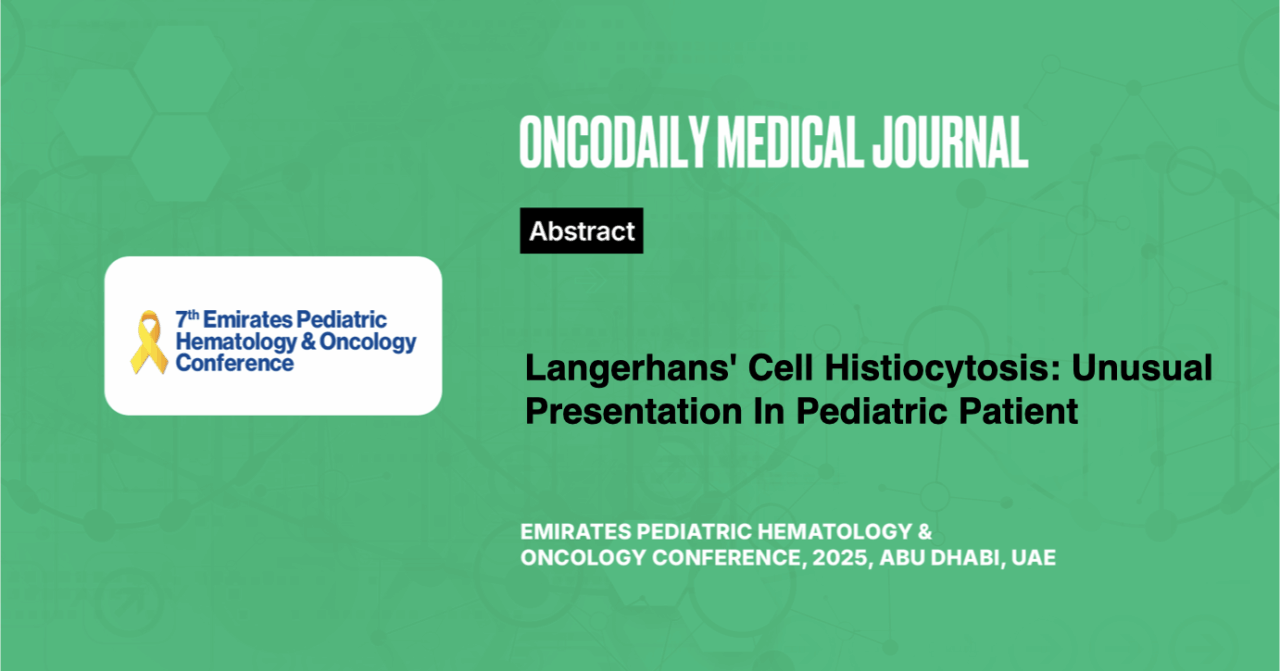Langerhans’ Cell Histiocytosis: Unusual Presentation In Pediatric Patient
Abstract
Introduction: Langerhans Cell Histiocytosis (LCH) is a rare disorder characterized by the abnormal proliferation and accumulation of Langerhans cells. Most commonly, it affects children aged 2-10 years. It can affect multiple organs, but the most common are the skeleton (80% of cases), the skin (33%), and the pituitary (25%). Risk-Organ involves the liver, spleen, and hematopoietic involvement (with or without bone marrow involvement). There are two widely recognized disease extent categories: 1) single-system LCH (involvement of a single organ or system), and 2) multisystem LCH.
LCH (involvement of two or more organ systems). The exact etiology remains unclear, but mutations in the BRAFV600E are found in about 50% of cases. Immunohistochemically, it is associated with CDia, Langerin (CD207), and S100 positivity. The objectives are to be familiar with the clinical diagnosis of Langerhans’ cell histiocytosis and to have a high index of suspicion in the pediatric population, as well as to be familiar with the management plan and prognosis of pediatric cases of Langerhans’ cell histiocytosis.
Case presentation: A 5-year-old child initially presented with a progressive history of lower limb weakness and inability to walk. The child has been unable to stand and walk for the past 15 days, with an insidious onset and gradual progression. Currently, the child is unable to bear weight on the lower limbs and cannot sit independently. Over the last 5 days, the child developed significant lower limb weakness, accompanied by abnormal movement, and is unable to walk without support.
Associated symptoms include back pain, although the duration is uncertain, as well as crampy abdominal pain primarily located in the left lower abdomen, which is associated with constipation. The child also experiences fever at night, mainly accompanied by sweating. There is no history of loss of consciousness, seizures, vomiting, urinary symptoms, rash, joint pain, or trauma. Otherwise, the review of systems is unremarkable.
On physical examination, the child is vitally stable. Neurologically, the child is irritable but alert, with a Glasgow Coma Scale score of 15/15. There are no craniofacial dysmorphic features or neurocutaneous markers. There is no apparent cranial nerve deficit. The child has an asymmetric posture with weakness in the right lower limb and outward rotation of the right lower limb. Motor power is assessed at 3/5 in both lower extremities. Muscle tone is normal in all four limbs. Deep tendon reflexes are present bilaterally at the ankles (+1), increased at the left knee (+3), but not elicitable at the right knee. There are no involuntary movements.
Laboratory results:
Final diagnosis:
Discussion: Patient was started on treatment as per the SOC MS LCH protocol. On follow-ups, the clinical picture improved. LCH has a widely variable clinical presentation, ranging from single indolent lesions to explosive multisystem disease. Children with liver, spleen, or bone marrow involvement are at the highest risk for death from
LCH and are therefore classified as having high-risk LCH with a 5-year survival of ~90% compared to >90% survival in single-system disease. High-risk organ involvement: 5-year survival ~60-70%, requiring aggressive treatment.
The incidence of spinal involvement varies from 6.5% to 25%. 80% occur in children younger than 10 years. LCH of the spine usually develops in the vertebral body with an osteolytic appearance and leads to what is classically known as “vertebra plana” Various treatments of LCH of the spine have been proposed, including prolonged bed rest, immobilization with cast and brace, hormone therapy, chemotherapy, radiation therapy, and surgery. Front-line treatment of MS-LCH is based on the association of VBL 6 mg/m2 i.v. Weekly bolus for 6 weeks, with prednisone 40 mg/m2 /day given orally in three divided doses for 4 weeks and then tapered over the following 2 weeks.
After the first 6 weeks of treatment, disease status should be reevaluated and treatment continued accordingly, depending on the response required a second induction if not fully responds, BRAFV600E mutation is found in about 60 percent of LCH cases, mutation in the MAPK pathway and BRF genes can also contribute to LCH, target therapy like BRAF inhibitors (e.g vemurafenib dabrafenib )and MEK inhibitors are being used in the treatment currently if the patient doesn’t respond to frontline treatment.





